Related Research Articles

A fence is a structure that encloses an area, typically outdoors, and is usually constructed from posts that are connected by boards, wire, rails or netting. A fence differs from a wall in not having a solid foundation along its whole length.
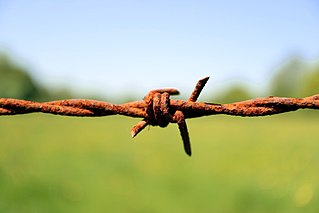
Barbed wire, also known as barb wire, is a type of steel fencing wire constructed with sharp edges or points arranged at intervals along the strands. Its primary use is the construction of inexpensive fences, and it is also used as a security measure atop walls surrounding property. As a wire obstacle, it is a major feature of the fortifications in trench warfare.
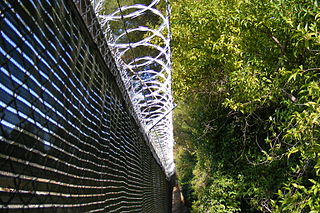
Barbed tape or razor wire is a mesh of metal strips with sharp edges whose purpose is to prevent trespassing by humans. The term "razor wire", through long usage, has generally been used to describe barbed tape products. Razor wire is much sharper than the standard barbed wire; it is named after its appearance but is not razor sharp. The points are very sharp and made to rip and snag clothing and flesh.

Sterling County is a county located on the Edwards Plateau in the U.S. state of Texas. As of the 2020 census, its population was 1,372, making it the ninth-least populous county in Texas. Its county seat is Sterling City. The county is named for W. S. Sterling, an early settler in the area. Sterling County was one of 30 prohibition, or entirely dry, counties in the state of Texas, but is now a moist county.

A cowboy is an animal herder who tends cattle on ranches in North America, traditionally on horseback, and often performs a multitude of other ranch-related tasks. Cattle drives ensure the herds health in finding pasture and bring them to market. The historic American cowboy of the late 19th century arose from the vaquero traditions of northern Mexico and became a figure of special significance and legend. A subtype, called a wrangler, specifically tends the horses used to work cattle. In addition to ranch work, some cowboys work for or participate in rodeos. Cowgirls, first defined as such in the late 19th century, had a less well-documented historical role, but in the modern world work at identical tasks and have obtained considerable respect for their achievements. Cattle handlers in many other parts of the world, particularly in South America and stockmen and jackaroos in Australia, perform work similar to the cowboy.

In agriculture, fences are used to keep animals in or out of an area. They can be made from a wide variety of materials, depending on terrain, location and animals to be confined. Most agricultural fencing averages about 4 feet (1.2 m) high, and in some places, the height and construction of fences designed to hold livestock is mandated by law.

The XIT Ranch was a cattle ranch in the Texas Panhandle which operated from 1885 to 1912. Comprising over 3,000,000 acres (12,000 km2) of land, it ran for 200 miles (300 km) along the border with New Mexico, varying in width from 20 to 30 miles. The massive ranch stretched through ten counties in Texas and at its peak regularly handled 150,000 head of cattle. The brand "XIT" was chosen for its difficulty to alter thus thwarting rustlers.

The Cherokee Outlet, or Cherokee Strip, was located in what is now the state of Oklahoma in the United States. It was a 60-mile-wide (97 km) parcel of land south of the Oklahoma–Kansas border between 96 and 100°W. The Cherokee Outlet was created in 1836. The United States forced the Cherokee Nation of Indians to cede to the United States all lands east of the Mississippi River in exchange for a reservation and an "outlet" in Indian Territory. At the time of its creation, the Cherokee Outlet was about 225 miles (360 km) long. The cities of Enid, Woodward, Ponca City, and Perry were later founded within the boundaries of what had been the Cherokee Outlet.
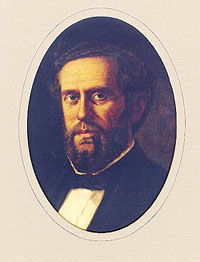
John Ireland was the 18th Governor of Texas from 1883 to 1887. During Ireland's term, the University of Texas was established, and construction on the Texas State Capitol began. Ireland is credited with the selection of local pink granite as the construction material.

An electric fence is a barrier that uses electric shocks to deter people and/or other animals from crossing a boundary. The voltage of the shock may have effects ranging from discomfort to death. Most electric fences are used for agricultural fencing and other forms of non-human animal control, although they are also used to protect high-security areas such as military installations or prisons, where potentially-lethal voltages may be used. Virtual electric fences for livestock using GPS technology have also been developed.

A drift fence is any long, continuous fence used to control the movement of animals in a particular open range, or to collect animals for research.
The Oklahoma City Blue Devils was the premier American Southwest territory jazz band in the 1920s. Originally called Billy King's Road Show, it disbanded in Oklahoma City in 1925 where Walter Page renamed it. The name Blue Devils came from the name of a gang of fence cutters operating during the early days of the American West.

A range war, also known as range conflict or cattle war, is a type of usually violent conflict, most commonly in the 19th and early 20th centuries in the American West. The subject of these conflicts was control of "open range", or range land freely used for cattle grazing, or conflicting sheep pasture, which gave these conflicts its name. Typically they were disputes over water rights, grazing rights, or cattle ownership.

Cattle drives were a major economic activity in the 19th and early 20th century American West, particularly between 1850s and 1910s. In this period, 27 million cattle were driven from Texas to railheads in Kansas, for shipment to stockyards in St. Louis and points east, and direct to Chicago. The long distances covered, the need for periodic rests by riders and animals, and the establishment of railheads led to the development of "cow towns" across the frontier.

The Spade Ranch is a large cattle ranch located in the Sandhills of western Nebraska between the towns of Gordon and Ellsworth. Founded in 1888 by Bartlett Richards, the ranch was placed on the National Register of Historic Places in 1980.

Bartlett Richards was a Cattle Baron and Banker who owned or fenced in vast acreage in Wyoming and Nebraska.
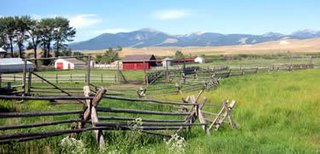
A ranch is an area of land, including various structures, given primarily to ranching, the practice of raising grazing livestock such as cattle and sheep. It is a subtype of farm. These terms are most often applied to livestock-raising operations in Mexico, the Western United States and Western Canada, though there are ranches in other areas. People who own or operate a ranch are called ranchers, cattlemen, or stockgrowers. Ranching is also a method used to raise less common livestock such as horses, elk, American bison, ostrich, emu, and alpaca.
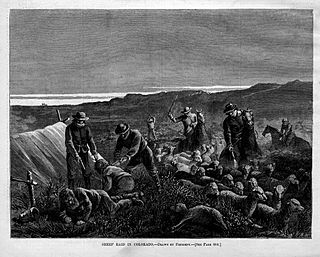
The sheep wars, or the sheep and cattle wars, were a series of armed conflicts in the Western United States fought between sheepmen and cattlemen over grazing rights. Sheep wars occurred in many western states, though they were most common in Texas, Arizona, and the border region of Wyoming and Colorado. Generally, the cattlemen saw the sheepherders as invaders who destroyed the public grazing lands, which they had to share on a first-come, first-served basis. Between 1870 and 1920, approximately 120 engagements occurred in eight states or territories. At least 54 men were killed and some 50,000 to over 100,000 sheep were slaughtered.

In the Western United States and Canada, open range is rangeland where cattle roam freely regardless of land ownership. Where there are "open range" laws, those wanting to keep animals off their property must erect a fence to keep animals out; this applies to public roads as well. Land in open range that is designated as part of a "herd district" reverses liabilities, requiring an animal's owner to fence it in or otherwise keep it on the person's own property. Most eastern states and jurisdictions in Canada require owners to fence in or herd their livestock.
The Big Die-Up refers to the death of hundreds of thousands of cattle on the Great Plains of the United States during the unusually cold and snowy winters of 1885-86 and 1886-87. Many ranchers were bankrupted as a result and the era of the open range in which cattle roamed unfenced on the plains began its decline.
References
- ↑ Johnson 2014, pp. 11–12.
- ↑ Graybill 2005, p. 255.
- ↑ Webb 1959, p. 311.
- ↑ Webb 1959, p. 312.
- ↑ Johnson 2014, p. 12.
- ↑ Webb 1959, p. 315.
- ↑ Webb 1959, p. 317.
- ↑ Liu 2009, pp. 56–57.
- ↑ "Range Wars and Feuds". The Spell of the West.
- ↑ Liu 2009, p. 86.
- ↑ Gard 1947–1948, p. 1.
- ↑ Gard 1947–1948, p. 5.
- ↑ Bentley 1998, p. 33.
- ↑ Gard 1947–1948, p. 7.
- ↑ Johnson 2014, p. 18.
- ↑ Gard 1947–1948, p. 8.
- ↑ Gard 1947–1948, p. 10.
- ↑ Graybill 2005, p. 260.
- ↑ Rosenbaum 1981, p. 82.
- ↑ Rosenbaum 1981, pp. 101–102.
- ↑ Rosenbaum 1981, p. 103.
- ↑ Rosenbaum 1981, p. 104.
- ↑ Rosenbaum 1981, p. 105.
- ↑ Rosenbaum 1981, p. 106.
- ↑ Rosenbaum 1981, p. 130.
- ↑ Liu 2009, p. 61.
- ↑ Bentley 1998, p. 35.
- ↑ Adams, Kathleen Rice (12 September 2016). "The Devil's Rope Comes to Texas". Petticoats and Pistols. Retrieved January 21, 2018. September 12, 2016
- 1 2 "FENCE CUTTING". Texas Online. Retrieved January 21, 2018. June 12, 2010